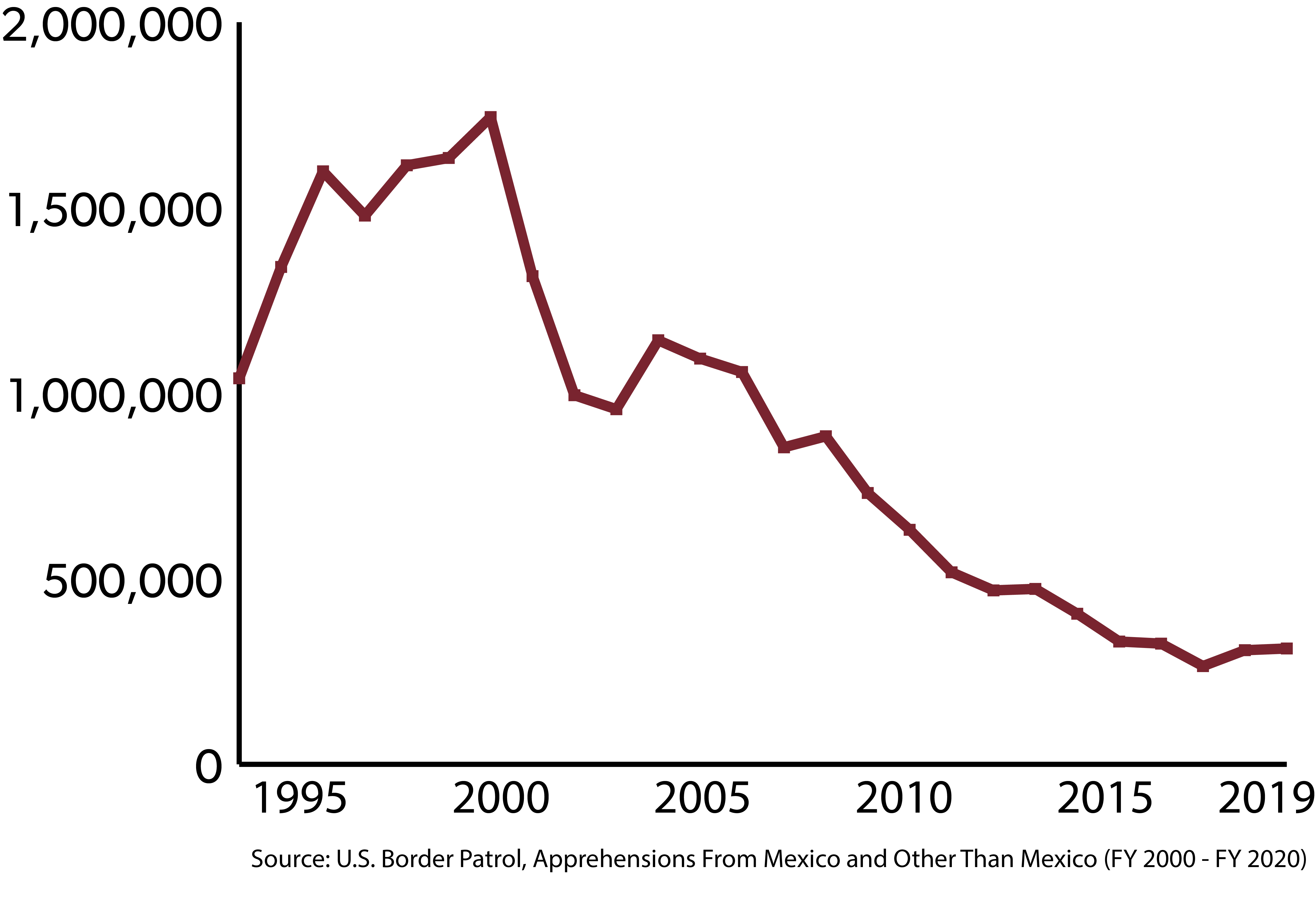
Immigration remains a contentious issue in Congress. While border security has been the primary focal point for many lawmakers, we also have at our disposal economic tools that can help alleviate illegal immigration. For instance, expanding free trade not only provides many benefits for American consumers and businesses, such as lower prices and more economic growth, but it also encourages more opportunities abroad, thereby reducing the incentive for people to leave their home countries. History shows that free trade provides a mutually beneficial way to reduce illegal immigration without costing U.S. taxpayers a dime.
How Congress Slashed Illegal Immigration From Mexico
In 1993, Congress approved the North American Free Trade Agreement (NAFTA). In the first few years following NAFTA’s approval, illegal immigration from Mexico to the United States increased due to the country’s unrelated peso crisis.
But once NAFTA was phased in and Mexico’s economy stabilized, illegal immigration from Mexico fell dramatically.
From 1994 to 2019, illegal immigration by Mexican citizens to the United States declined by 70 percent. From its peak in 2000, illegal immigration by Mexicans was reduced by 82 percent.
In 1994, 95 percent of deportable aliens were Mexican nationals. By 2019, just prior to the COVID pandemic, Mexicans accounted for just 26.5 percent of all expulsions and noncitizen apprehensions by the U.S. Border Patrol. Today, illegal immigration from Central America is a more pressing concern.
Figure 1: Expulsions and Noncitizen Apprehensions: Mexico

How Trade Policy Can Reduce Illegal Immigration Today
In 2019, people from the Central American countries of Guatemala, Honduras, and El Salvador accounted for nearly two-thirds of noncitizen apprehensions. While the United States has a free trade agreement with Central America (CAFTA-DR), that agreement is weak and riddled with loopholes.
A recent Texas A&M study found that something as simple as improving the agreement’s rules of origin that determine whether clothing is eligible for low tariffs under CAFTA-DR could reduce immigration from the region by as much as 67 percent. This estimate is in line with the reduction in illegal immigration from Mexico that followed NAFTA’s phase-in.
More comprehensive reductions in U.S. barriers to imports from Central America would have an even greater impact. Removing U.S. tariffs and quotas on sugar, steel, and aluminum from Central America would boost the region’s economy while lowering costs for U.S. manufacturers.
Reducing or eliminating U.S. trade barriers would reduce illegal immigration from Central America by encouraging mutually beneficial economic growth. It wouldn’t require new federal spending and instead would actually save taxpayers money. As a bonus, it would counter Communist China’s efforts to expand its influence in the region. When debating immigration and border control measures, Congress should not overlook the opportunity to reduce illegal immigration and expand U.S. influence by expanding mutually beneficial trade.

